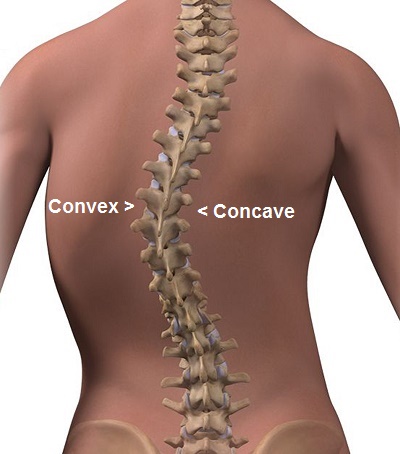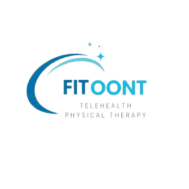How do you know if you have scoliosis? Do you want to know everything about Scoliosis or curvature of the spine?
You will find everything about this situation in this article, from the first word to the last word in which we cannot do it without what we benefit from, whether doctors or patients.
In principle, but let us complete the subject of the explanation, or not, please, because it takes a very large amount of time. So, every need gathers like this, so I hope you know us benefit and we continue and not stop.
➡️ Definition:
Scoliosis: is the abnormal lateral curving of the spine to the left or right side.
If we look at the spine from behind, we will find that it is supposed to descend like this straight, so if it happened and the spine that descended this happened any curve or crooked any side, whether right or left, it is called Scoliosis. Keep reading to find out How do you know if you have scoliosis?
➡️ Causes of Scoliosis:
- Idiopathic Scoliosis.
- Congenital Scoliosis.
- Neuromuscular Scoliosis.
1- Idiopathic Scoliosis: The first type
The cause is unknown, and it represents 80% of Scoliosis cases. Imagine 80% of the cases that this disease occurs. The cause is not known.
It often happens during the growth period before puberty, but it can happen after that as a normal condition, especially with the elderly.
The Idiopathic scoliosis is divided into 3 groups:
1- Infantile scoliosis:
Develops at the age of 0–3 years and shows a prevalence of 1%. This type begins in the infant and begins at the age of one to 3 years and represents only 1% of the Idiopathic.
2- Juvenile scoliosis:
Develops at the age of 4–10 years, comprises 10–15% of all idiopathic scoliosis in children, untreated curves may cause serious cardiopulmonary complications, 95% of these patients need a surgical procedure.
This type occurs in children who are slightly advanced in age from 4 to 10 years and represents 10-15% of the Idiopathic. 95% of cases in this type need an operation to affect his cardiopulmonary.
3- Adolescent scoliosis:
Develops at the age of 11-18 years, accounts for approximately 90 % of cases of idiopathic scoliosis in children. This type occurs in adolescents from 11 to 18 years old and represents about 90% of Idiopathic cases.
You May Be Interested In: Causes of Low Back Pain In Female
2- Congenital Scoliosis: The second type
Results from embryological malformation of one or more vertebrae and may occur in any location of the spine.
It occurs as a result of a fetal malformation in one or more vertebrae, and it occurs anywhere in the spine.
The vertebral abnormalities cause curvature and other deformities of the spine because one area of the spinal column lengthens at a slower rate than the rest.
When some vertebrae are deformed, there will be a curvature of the spine, as a result of these deformations leaving regions that grow before regions in the spine.
As these abnormalities are present at birth, congenital scoliosis is usually detected at a younger age than idiopathic scoliosis.
Because of these abnormalities that appear at birth, congenital scoliosis can be diagnosed and discovered faster than the idiopathic.
3- Neuromuscular Scoliosis: third type
Encompasses scoliosis that is secondary to neurological or muscular diseases.
This is a result of neuromuscular diseases such as: cerebral palsy, spinal cord trauma, muscular dystrophy, spinal muscular atrophy and spina bifida.
This type develops faster than the idiopathic and often requires surgical intervention.
You May Be Interested In: Neuro Kinetic Therapy
➡️ Risk factors:
Risk factors for developing the most common type of scoliosis include:
1- Age: Signs and symptoms typically begin during the growth spurt that occurs just prior to puberty. As we said above, it often happens before puberty, so this is a strong factor.
2- Sex: although both boys and girls develop mild scoliosis at about the same rate, girls have a much higher risk of the curve developing and requiring treatment.
Although the incidence of this disease is considered one in males and females, if it occurs to females, it will develop very quickly and the situation will deteriorate and it needs urgent treatment.
3- Family history: Scoliosis can run in families, but most children with scoliosis don’t have a family history of the disease.
It may be a genetic cause, but most children who have scoliosis do not have to have a family member or have a genetic cause, but it is an important factor.
➡️ Characteristics/Clinical Presentation :
- Uneven shoulders: The 2 shoulders are not on one level
- One shoulder blade that appears more prominent than the other: The scapula will be more visible on one side than on the other.
- Uneven waist: The waist is not on one level, like the shoulder.
- One hip higher than the other: It has a hip higher than the shoulder, just like the shoulder.
- The entire body leans toward one side: The whole body leans in one hand.
- We may have trouble breathing.
➡️ More serious cases of scoliosis may cause:
In the severe cases, we can find:
- Back pain
- Inability to stand upright
- Leg pain, numbness, and/or weakness due to radiculopathy, or pressure on nerves in the lumbar spine
- Height loss in adults
- Bowel or bladder dysfunction in more severe cases
➡️ Investigation:
- X-ray.
- Spinal radiograph.
- CT scan.
- MRI.
➡️ Examination: How do you know if you have scoliosis?
1- Examination of the active movements (flexion, extension and side flexion) of the spine in the cervical, thoracic and lumbar segment.
Do an examination of all active movement in the cervical, thoracic, and lumbar.
2. The Adam forward bend test can be used to make a distinction between structural scoliosis or non-structural scoliosis of the cervical to lumbar spine.
The test can be performed in the standing and sitting position. We focus on this test because it is very important.
In short, we have two types of scoliosis, a functional type, and this is due to leg length descriptency or a problem with the muscles, so that this curve appears as a compensation for the problem that occurred.
Another type is called Structural, and it remains due to a problem in the bone formation, which means a problem with the spine itself, not because of any other problem.
Ok, how do you differentiate between them? Very simple, through this Adam Test, how do you do it? How do you know if you have scoliosis with Adam test?
Let the patient go down to the feet if the abnormal curve disappears, this functional curve and the curve was present due to another problem
But if the curve does not disappear and an apparent preference remains, this is structural, and the problem is the spine itself.
In this video, I show you exactly what is happening in order to absorb it.
3- The Cobb angle is a standard measurement to determine and track the progression of scoliosis
How do you know if you have scoliosis or not, through a certain angle, so how is this angle?
By drawing a straight line from the end of the first paragraph from above, then the curve, and by drawing a straight line from the end of the last paragraph from below at the end of the Curve, and the point where they meet each other. This is the Cobb’s angle we are talking about.
If this angle is more than 10 degrees, this means that it has scoliosis.
4- The scoliometer is an inclinometer designed to measure trunk asymmetry, or axial trunk rotation. It’s used in three areas:
- Upper thoracic (T3-T4)
- Middle thoracic (T5-T12)
- Thoraco-lumbar area (T12-L1 or L2-L3)
If the measurement is equal to 0°, there is a symmetry at the particular level of the trunk. An asymmetry at the particular level of the trunk is found, if the scoliometer measurement is equal to any other value.
This is a measurement method that keeps you working like a water scale, and I will show you a picture under it, so it will be easier for you and understand what it looks like.
5- Pulmonary function testing is useful in the preoperative evaluation of patients.
- FVC gives an assessment of lung volume.
- FEV1 provides an assessment of flow function.
➡️ Treatment:
Of course, our treatment is divided into Conservative or Surgery.
You May Be Interested In: The Truth About Ice Massage To Relieve Pain
➡️ Surgery Treatment:
It remains in severe cases, and the most common need is to do something called Spinal Fusion in which two or more vertebrae are welded together, so that movement is not easy, some of what is happening. Among its damages is that it can cause bleeding, infection, pain or nerve damage.
➡️ Conservative Treatment:
This is our job:
1- Bracing:
Kind of two:
- Full-time braces: Milwaukee brace, Boston brace, Wilmington brace.
- Nighttime braces: Charleston bending brace.
Wearing a brace won’t cure scoliosis or reverse the curve, but it usually prevents further progression of the curve. The brace does not return to the normal curve again, but only prevents it from happening to progression.
2- Insoles:
This is worn by people who have a leg length descriptency, meaning a man is shorter than a man in order to maintain the position of the body.
3- The Kinesiotape has an important role in the scoliosis.
I think in college, a doctor was explaining this issue to us, and he brought us a case of scoliosis that he researched and treated only with Kinesiotape, and I will show you a video of how to apply it below.
Watch Video For Scoliosis Posture Taping:
4- Physical exercises:
Before anything else, I want you to know a rule because this situation makes many people wrong. When the curve happens, two things happen with it, on the one hand it is convex and on the one hand it is concave. The convex side is always long and weak, so I need to do it as strength, and the concave side is always tight, short and strong. So I need to do it stretch to get it relaxation.

In the pictures, I want to show the shape of the convex and the concave, but if you know this rule, you will know how to apply most of the exercises in scoliosis, whether strength or stretch, I always work with this theory.
Click on this link if you want to know more about exercises for scoliosis treatment
Anyone interested and would like to know a lot of other information about some diseases in the same way? Write to us in the comments about your opinions and requests



